|
2009 |
|
Birds of Bhimashankar
|
|
September 2009 |
|
Please use minimum 1280 pixel horizontal screen
resolution for viewing. Please be patient while all the images in
webpage are loaded. |
|
Please do not use the images for any commercial
use without permission. Text in Marathi and English is not exact
translation. |
|
|
|
|
The news of early onset of monsoon prediction ringed a loud alarm in my mind. I decided my yearly pre-monsoon visit to Bhimashankar forest to be preponed by a week or so. "Are you traveling to bhimashankar?, From which village you are from ?" a shepherd asked me on the way. I said "yes, from Pune" He was very happy to meet me. He had never seen a nest hole of khandya (White bellied kingfisher) and Myna in his past and got enlightned by his new learning.
|
After having chitchat about the birds, rains and cattle in his herd, I left him with his cattle in midst of the land surrounded by tiny isolated hills in Bhima river basin. The weather was nice with light pre-monsoon breeze with sparse clouds in the blue sky. After cutting the wind for about an hour from Rajgurunagar, I reached the village called as Chaaskaman. At the water puddle on the outskirts of the village I saw a pair of greater coucal, a good fortune bird ! ornamented by its chestnut wings and beautiful reddish eyes.
|
|
| |
| |
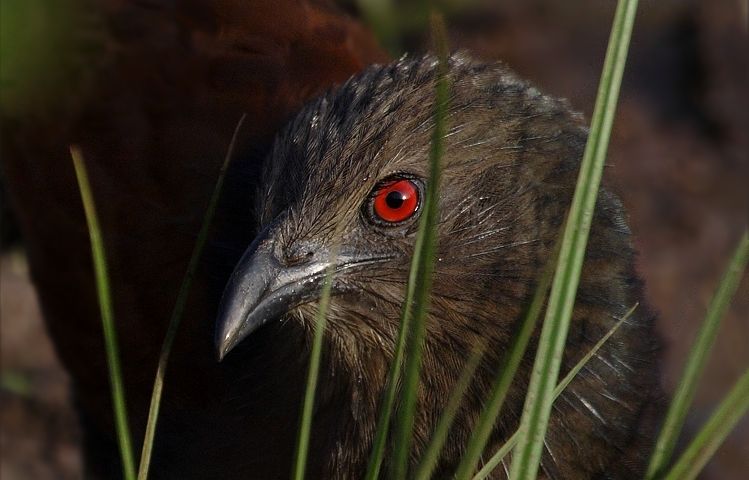 |
|
Centropus cinensis, Greater Coucal
|
|
Canon EOS 350D,
100-400 mm f4-5.6 L IS USM, 1/800 s, f/5.6, iso 400, -1 EC, Chaaskaman, near Pune,
May 2009 |
|
|
On the open cultivated countryside, a pair of Red rumped swallows was busy in collecting the mud for building the nest. The bright red rump of the birds was visible during their low level flights.
|
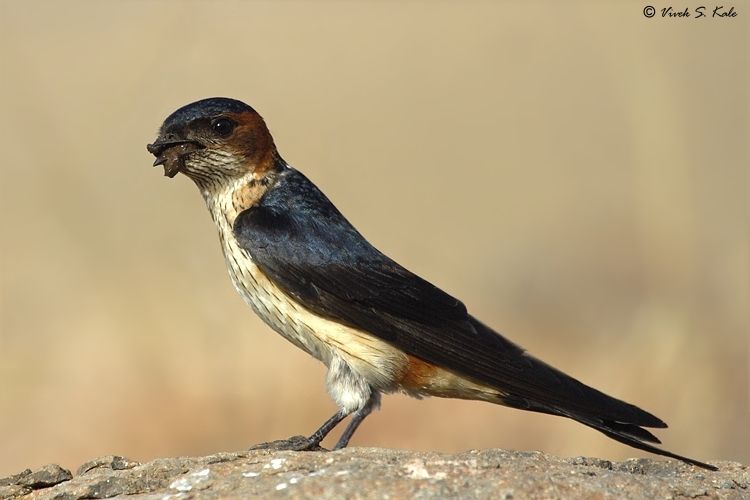 |
|
Hirundo daurica, Red rumped swallow
|
|
Canon EOS 350D,
100-400 mm f4-5.6 L IS USM, 1/2000 s, f/5.6, iso 200, -1 EC, Chaaskaman, near Pune,
May 2009
|
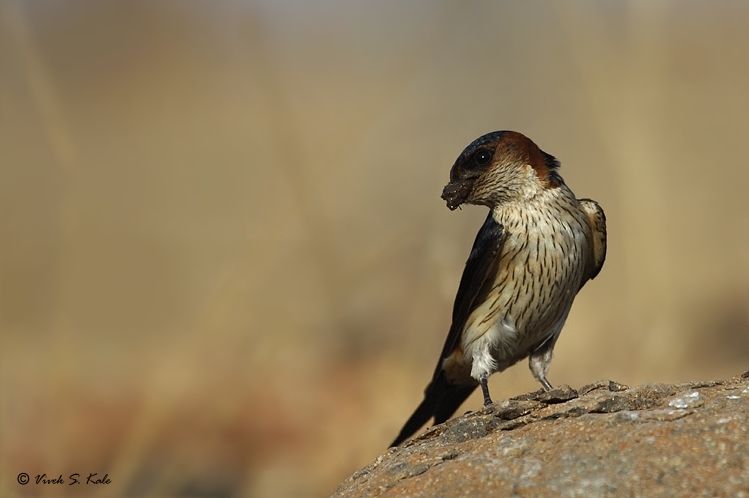 |
|
Hirundo daurica, Red rumped swallow
|
|
Canon EOS 350D,
100-400 mm f4-5.6 L IS USM, 1/2500 s, f/5.6, iso 200, -1 EC, Chaaskaman, near Pune,
May 2009 |
|
The road hereafter leaves the discipline behind. It is twisted in all the dimensions by the river and the hills around it. The backwaters of Chaaskaman dam built on Bhima River, has gulped lot of land in the basin, leaving most of the villages to get displaced high in the hills. The other interesting village on the way is Taleghar. On every Thursday, the village has its own weekly colorful bazaar spilled over the main road, which is a riot of colors and sweets. The villages however are surrounded by unreasonable spread of agricultural cultivation open land, which in turn has been developed by deforestation. I reached Bhimashankar after passing through the enchanting winding road through mesmerizing steep hills. On the way I saw red rumped swallows, Dusky craig martins, Sunbirds, greater coucal, small green bee-eaters, Rufus bellied larks, ashy crowned sparrow larks, Common Krestel, Black shouldered kite, grey hornbills, plum headed parakeets, black hooded oriole, pied bushchat, white bellied drongo, house sparrows and many more common birds.
|
 |
|
Hirundo concolor, Dusky Craig Martin
|
|
Canon EOS 350D,100-400 mm f4-5.6 L IS USM,iso 400, f5.6, 1/640 sec, -2/3 EC, Chaskaman, near Pune, May 2009.
|
|
The bells were ringing in the Lord Shiva Jyotirlinga shrine located in the forest of Bhimashankar. The temple and the small shop market around it was busy with the activities of pilgrims. After leaving behind the shrine, pilgrims, busy shopkeepers, plastic trash spread all over around the human settlement, I entered the forest, welcomed by a blue Mormon and a bird call. Having got curious about the bird, I stopped and looked around in the trees. Beautiful male white throated blue flycatcher was perched on a vine, just 5 meters away from me.
|
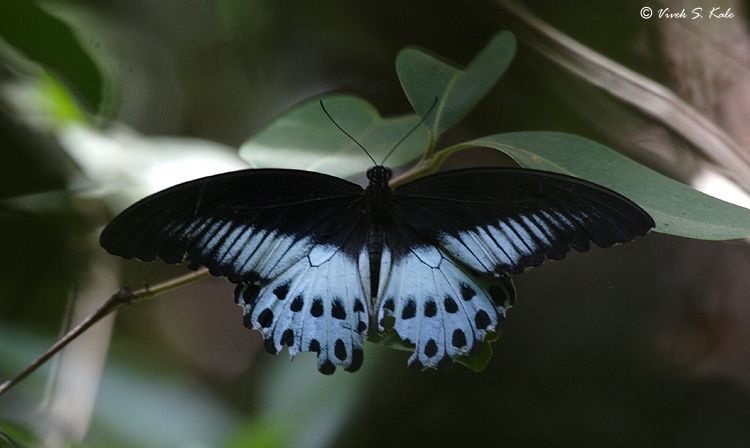 |
|
Blue Mormon butterfly
|
Canon EOS 350D,100-400 mm f4-5.6 L IS USM, iso 400, f5.6, 1/200 s, -1 EC, Bhimashankar,near Pune, May 2009.
|
While walking on the way I was not impressed by the sparse plastic trash left by the pilgrims everywhere along the trail. A pristine forest full of critical species of birds, plants is being tarnished by the god fearing humans. The trail in the forest is covered with the layer mixed of brown, yellow and red dried leaves. Shekrus (Indian giant squirrels) were chasing each other high on the tree canopy. The forest was booming with the bird calls and occasional clutter noise of Shekrus. On the way I also noticed couple of tall trees making loud rubbing noise. A lone curious orange headed thrush whisked away at my site. As usual it came back to observe me. After careful mutual observation of each other, both of us departed on our ways. Having wandered through forest for about couple of hours, I heard various birdcalls. I decided to rest near a rock. Water was dripping slowly through the rocks in to couple of small craters in the rock, making a periodic dripping noise. I waited for long time. Nothing happened for about an hour or so. Sun had climbed up the ladder of pre-monsoon clouds in the sky and it was almost mid noon. The silence was broken by a villager trekking through forest towards the shrine. I chit chatted about his village, his crop, the rains, his children, my job, his name, my name. After the villager left, the silence prevailed again. A distant shrill of a pair of changeable hawk eagles was falling on the ears from high skies overhead. Occasionally half eaten jamun fruits were falling on me from a high tree.
|
|
As the hide and seek of sun behind the clouds continued, and I got tired of toggling ISO setting, I noted a familiar bird call coming from a mango tree nearby. A spectacular Orange headed thrush gently landed on the rock right in front of me. I tried to hide from the bird to cause minimum disturbance to it, the bird on the other hand was more curious about me and started peeping at me from behind the rock over waterhole, with curiosity. I was hiding and the bird was in open looking for me. It continued its activities at waterhole with one eye on me.
|
|
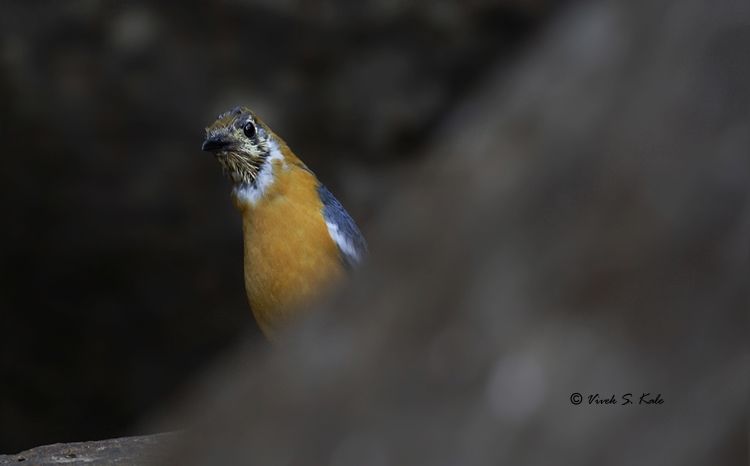 |
|
Zoothera Citrina, Orange headed ground thrush
|
|
Canon EOS 350D,100-400 mm f4-5.6 L IS USM, 1/160 s, f/5.6, iso 400, -2/3 EC, Bhimashankar,near Pune, May 2009.
|
 |
|
Zoothera Citrina,Orange headed ground thrush
|
|
Canon EOS 350D,100-400 mm f4-5.6 L IS USM, 1/125 s, f/5.6, iso 400, -2/3 EC, Bhimashankar,near Pune, May 2009.
|
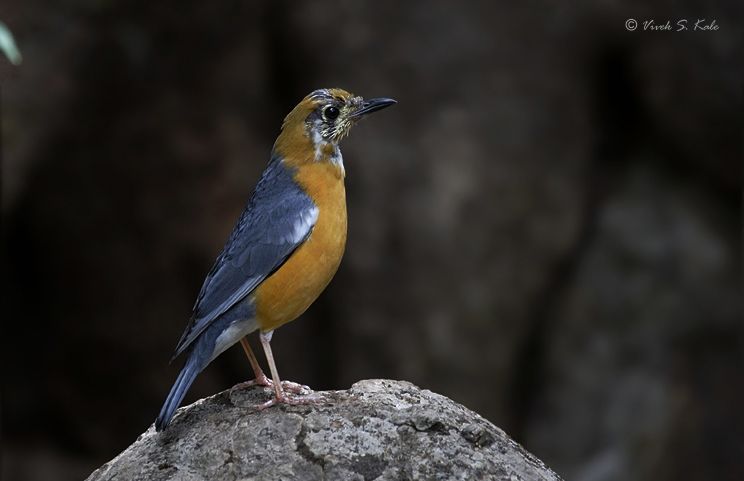 |
|
Zoothera Citrina, Orange headed ground thrush
|
Canon EOS 350D,100-400 mm f4-5.6 L IS USM, 1/80 s, f/5.6, iso 400, -2/3 EC, Bhimashankar,near Pune, May 2009.
|
It bathed in the water in a very unique way. It deeped its frontal body up to belly in the water without opening its wings, seeped the water at the same time. It went out of water and rubbed its frontal body on the rock surface below, and repeated the same half a dozen times before leaving the waterhole. |
|
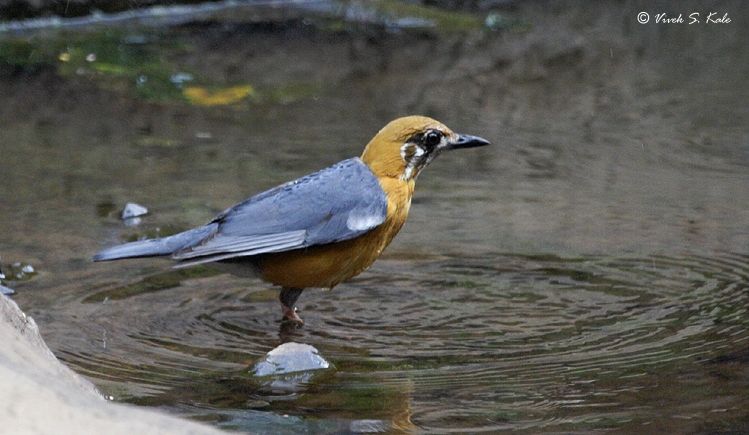 |
|
Zoothera Citrina, Orange headed ground thrush
|
Canon EOS 350D,100-400 mm f4-5.6 L IS USM, 1/200 s, f/5.6, iso 200, -1 2/3 EC, Bhimashankar,near Pune, May 2009.
|
The movement in the forest behind the waterhole attracted my attention. From top of a dried tree trunk, a bird dived in to the foliage, around the rocks on the floor. The small bird was fiercely in the hunting mood. It was White throated Blue flycatcher male.
. |
|
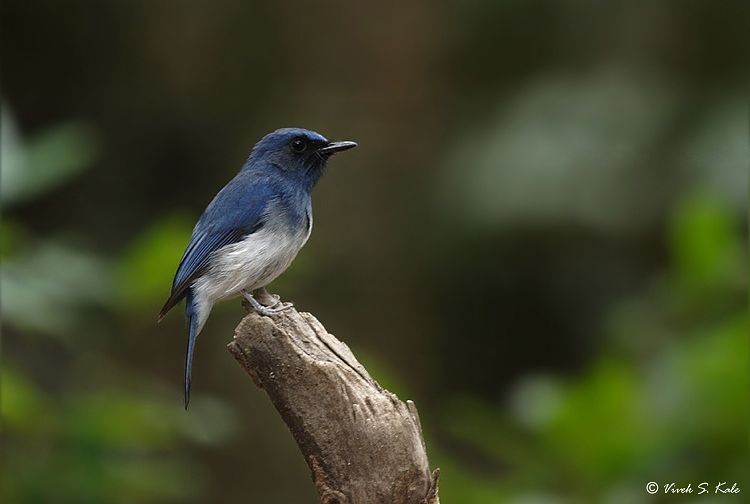 |
|
Cyornis pallipes, White bellied blue flycatcher male
|
Canon EOS 350D,100-400 mm f4-5.6 L IS USM, 1/60 s, f/5.6, iso 400, - 2/3 EC, Bhimashankar,near Pune, May 2009.
|
I had never seen the bird in the open and it is mostly seen in the dark areas of the forest. After having got overjoyed at the site of the bird, I returned back to my original perch and leaned against the rock.
|
|
 |
|
Cyornis pallipes, White bellied blue flycatcher male
|
Canon EOS 350D,100-400 mm f4-5.6 L IS USM, 1/160 s, f/5.6, iso 400, -2/3 EC, Bhimashankar,near Pune, May 2009.
|
Hundereds of flies resting on the rocks around the puddle, suddenly bursted in to air. A bird, female White throated Blue flycatcher arrived at the scene and was busy hunting the flies. Disturbed by a sudden outburst of the flies the small fish and insects got also disturbed and started moving randomly with agitation in the puddle. The bird remained still, planning for the next attack. It was so still that I could photograph it, even with my otherwise wrong and long exposure. The camera was fooled by pitch darkness behind the bird and thrilled with the drama, I forgot to correct it. After having the feast, the bird vanished in to the woods, only to return back after an hour or so. |
|
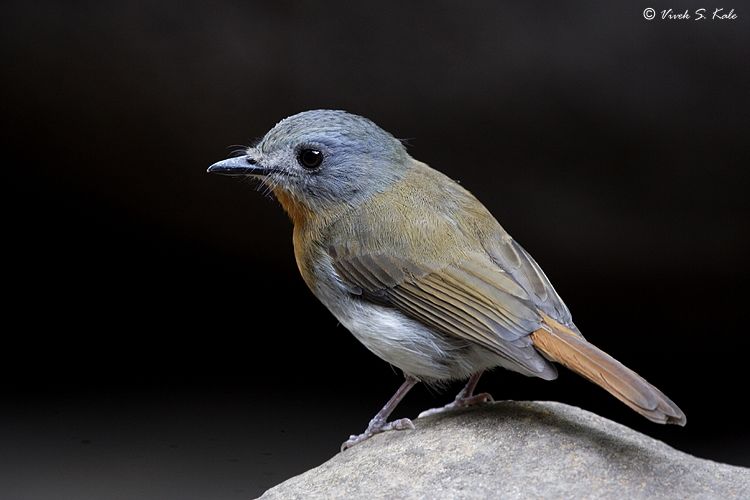 |
|
Cyornis pallipes, White bellied blue flycatcher female
|
Canon EOS 350D,100-400 mm f4-5.6 L IS USM, 1/15 s, f/5.6, iso 400, -1 EC, Bhimashankar,near Pune, May 2009.
|
|
|
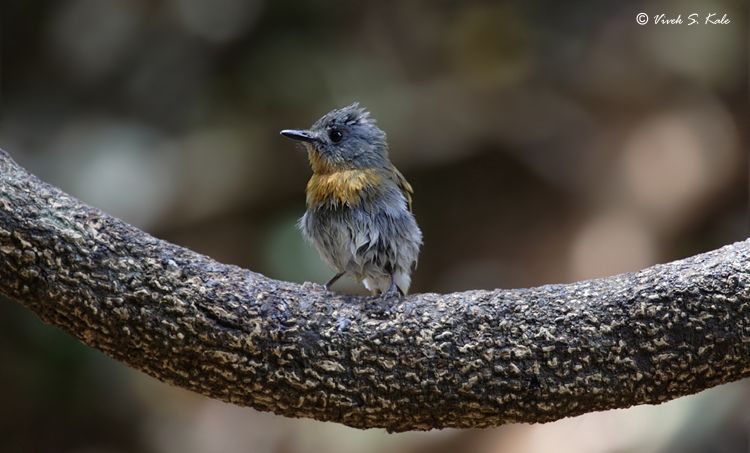 |
|
Cyornis pallipes, White bellied blue flycatcher female
|
|
Canon EOS 350D,100-400 mm f4-5.6 L IS USM, 1/80 s, f/5.6, iso 400, -2/3 EC, Bhimashankar,near Pune, May 2009.
|
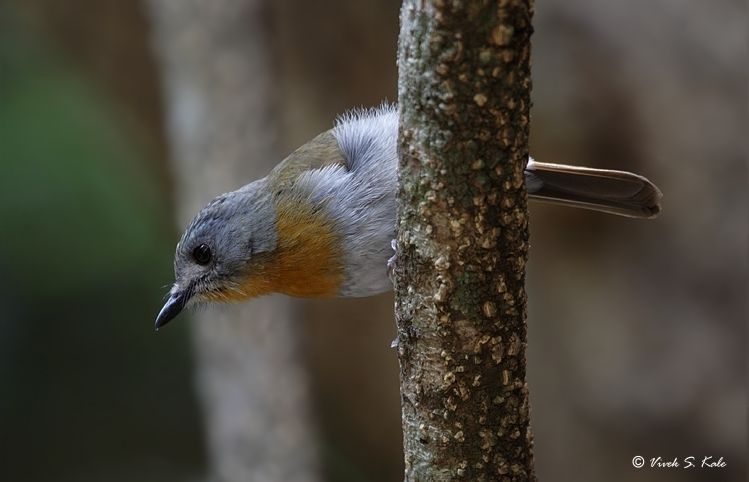 |
|
Cyornis pallipes, White bellied blue flycatcher female
|
Canon EOS 350D,100-400 mm f4-5.6 L IS USM, 1/80 s, f/5.6, iso 400, -2/3 EC, Bhimashankar,near Pune, May 2009.
|
As the sun came over the head, and the temperature soared, a big party of Red whiskered bulbuls consisting of about 25-30 birds appeared on the scene. They had a furious bathing sequence, one after the other. Repeated sequence of bathing and consequent drying of the wings by these birds, continued for about an hour.
|
|
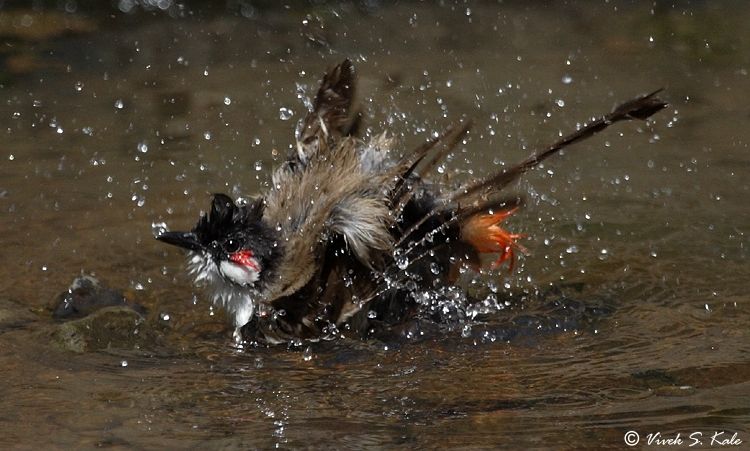 |
|
Red whiskered bulbul
|
Canon EOS 350D,100-400 mm f4-5.6 L IS USM, 1/1600 s, f/5.6, iso 400, -1 EC, Bhimashankar,near Pune, May 2009.
|
High on the trees were black bulbuls and yellow browed bulbuls watching the action. Black bulbuls never got down the high trees. Thrilled by the fun, the yellow browed bulbuls joined the party. The red whiskered bulbuls used to get in the water to take a nice deep with flutter of its wings. A fellow bulbul was standing at the edge of water as a watch guard. With the occasional rapid alarm call, the flock was vanishing into the trees around, only to reappear again back in couple of minutes. |
|
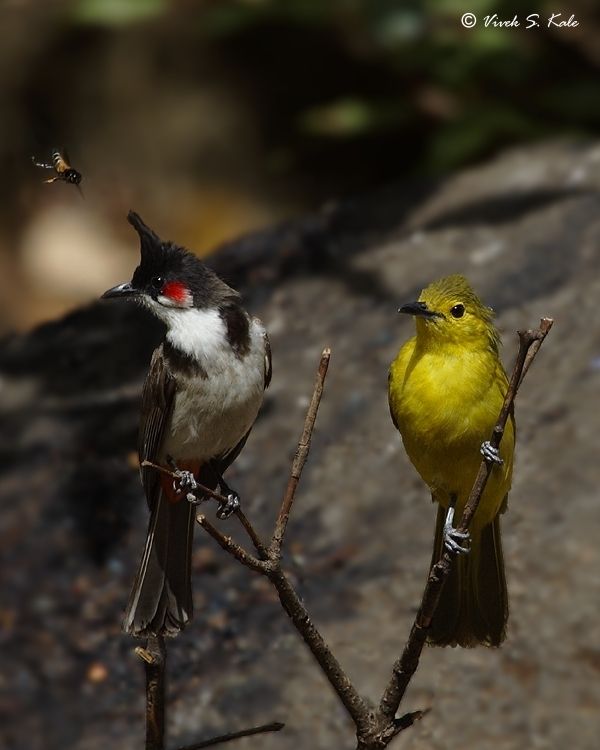 |
|
Yellow browed bulbul with Red whiskered bulbul
|
Canon EOS 350D,100-400 mm f4-5.6 L IS USM, 1/1250 s, f/5.6, iso 200, -1 1/3 EC, Bhimashankar,near Pune, May 2009.
|
The yellow browed bulbuls however never rested in the water, they were having what we can call as a rapid flying deep, in the water. After having the nice sunbath, to dry the wings, the yellow browed, vanished in to the high trees.
|
|
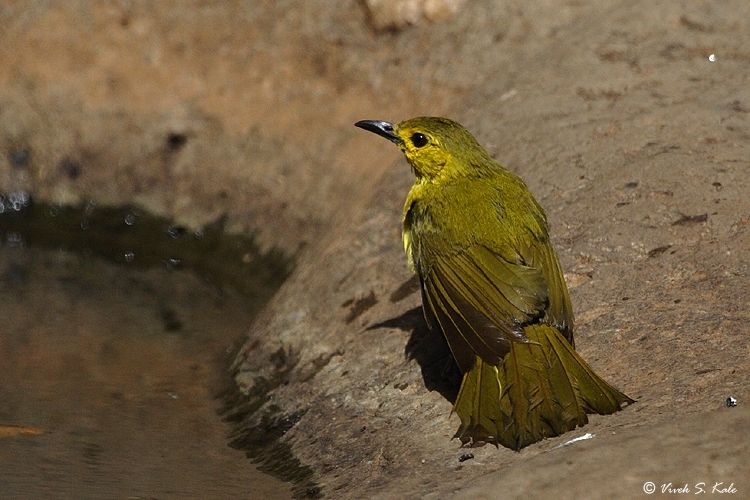 |
|
Yellow browed bulbul
|
Canon EOS 350D,100-400 mm f4-5.6 L IS USM, 1/4000 s, f/5.6, iso 400, -1 1/3 EC, Bhimashankar,near Pune, May 2009.
|
With the rush of bulbuls, at the edge of the waterhole, black napped monarch flycatchers appeared on the scene. The harsh typical short note of the bird called for my attention to the adjoining bush. These birds however kept the distance from the bulbuls and had a flying deep bath in a small water puddle downstream. The male and female black napped monarch flycatchers never perched on the rock, and were doing their sorties from the small bush nearby.
|
|
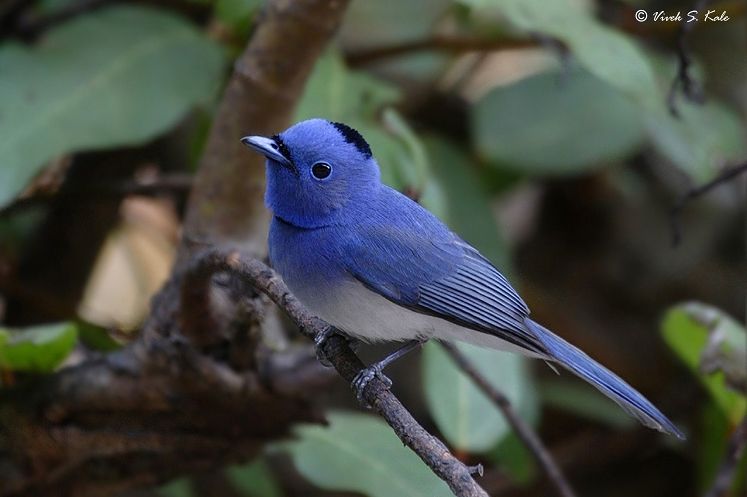 |
|
Black naped Monarch flycatcher male
|
Canon EOS 350D,100-400 mm f4-5.6 L IS USM, 1/100 s, f/5.6, iso 400, -2/3 EC, Bhimashankar,near Pune, May 2009.
|
|
|
 |
|
Black naped Monarch flycatcher female
|
Canon EOS 350D,100-400 mm f4-5.6 L IS USM, 1/250 s, f/5.6, iso 400, -2/3 EC, Bhimashankar,near Pune, May 2009.
|
High in the canopy I sensed the movement of large birds. About four numbers of
Nilgiri Wood Pigeons (Columba Elphinstoni) perched in the roof. The birds are one of endangered bird species endemic to Western Ghats.
|
|
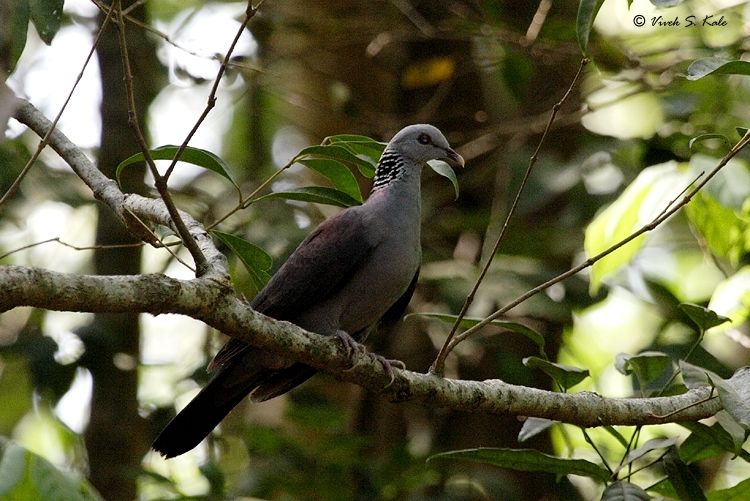 |
|
Neelgiri Wood Pigeon
|
|
Canon EOS 350D,100-400 mm f4-5.6 L IS USM, 1/200 s, f/5.6, iso 400, -1 1/3 EC, Bhimashankar,near Pune, May 2009.
|
|
The fullvetas appeared and drank water cautiously hiding behind the terda plants.
|
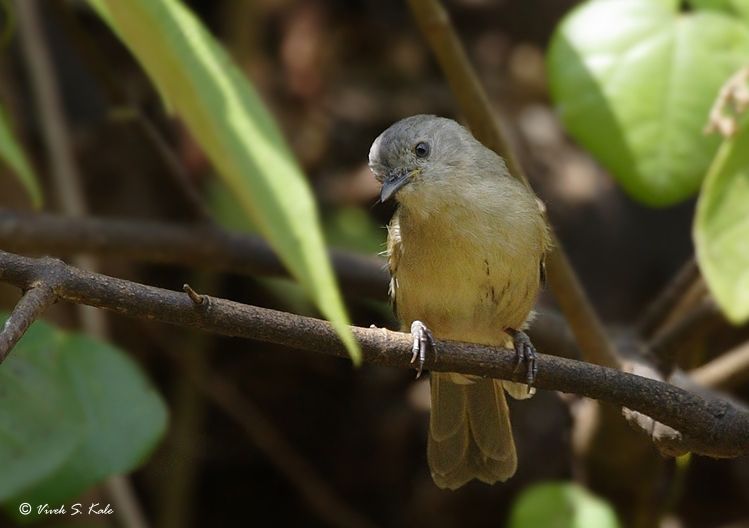 |
|
Brown cheeked fulvetta
|
|
Canon EOS 350D,100-400 mm f4-5.6 L IS USM, 1/500 s, f/5.6, iso 400, -2/3 EC, Bhimashankar,near Pune, May 2009.
|
|
The small sunbird did the same followed by the munias. Every time these small birds used to appear on the scene, a fellow red whiskered used get close to the scene and observe the small birds. What it was doing, was not understood by me. |
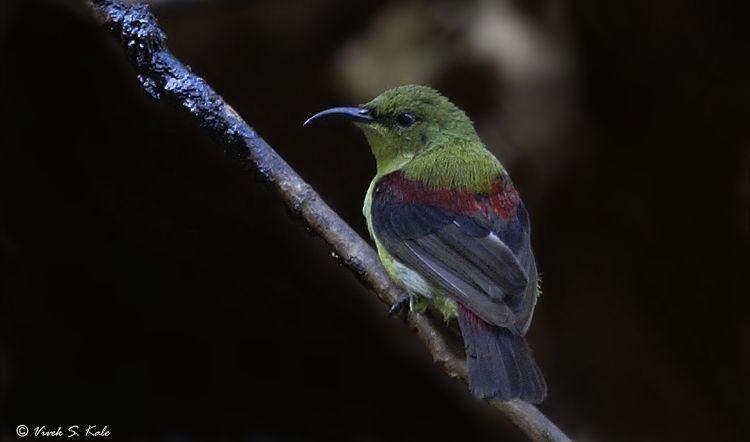 |
|
Crimson backed Sunbird
|
|
Canon EOS 350D,100-400 mm f4-5.6 L IS USM, 1/100 s, f/5.6, iso 400, -2/3 EC, Bhimashankar,near Pune, May 2009.
|
|
Couple of red whiskered flew to the adjacent water hole behind the rocks. I followed them cautiously. This time it was puff throated babbler pair that was on the scene, followed by a female blue throated flycatcher, and orange headed thrush. The Malabar whistling thrush appeared on the scene and vanished in the woods after taking sip of water. Like black bulbuls, shamas also never got down from the tall trees. The most exciting spotting of my trip was a pair of black throated Munias. The record of this bird so north in wetern ghat is very interesting. The birds seem to have dark brown face (as mentioned in field books), but it also has distinct dark brown spot below the throat.
|
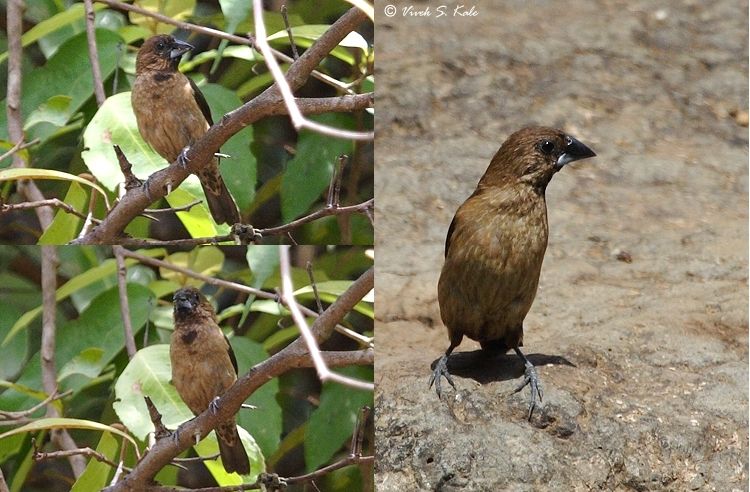 |
|
Lonchura kelaarti, Black throated Munia
|
|
Canon EOS 350D,100-400 mm f4-5.6 L IS USM, 1/200 s, f/5.6, iso 400, -2/3 EC, Bhimashankar,near Pune, May 2009.
|
|
|
 |
|
Puff throated babbler
|
|
Canon EOS 350D,100-400 mm f4-5.6 L IS USM, 1/60 s, f/8, iso 400, -2/3 EC, Bhimashankar,near Pune, May 2009.
|
|
The enigmatic emerald dove quietly vanished into the woods after having drink.
TD> |
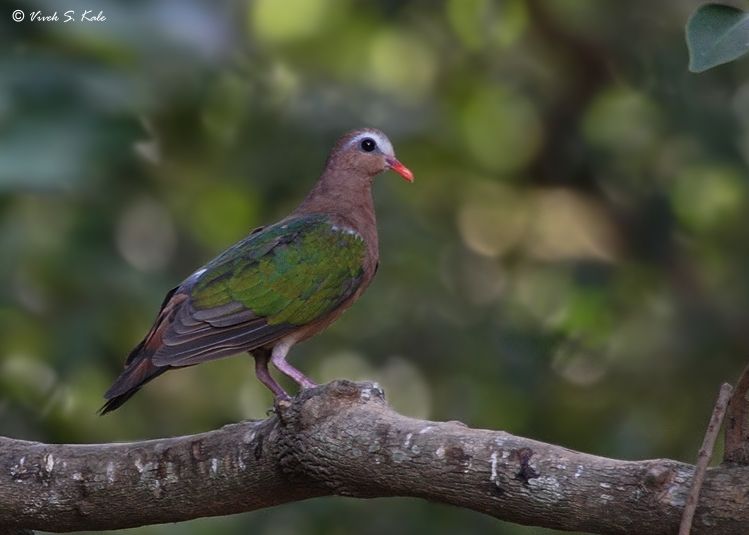 |
|
Emerald Dove
|
Canon EOS 350D,100-400 mm f4-5.6 L IS USM, 1/50 s, f/5.6, iso 400, -2/3 EC, Bhimashankar,near Pune, May 2009.
|
A pair of pied bush chat, a pair of jungle mynas also made the appearance. Jungle Mynas had a nice bath. Pied bush chats just drank the water.
|
|
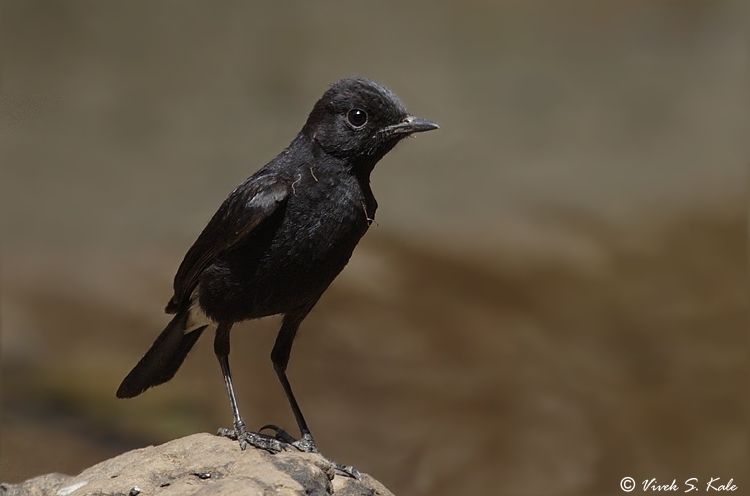 |
|
Pied bushchat
|
Canon EOS 350D,100-400 mm f4-5.6 L IS USM, 1/2000 s, f/5.6, iso 400, -1 EC, Bhimashankar,near Pune, May 2009.
|
A map and green bottle butterflies were spotted at the moist zone near the waterhole.
|
|
 |
|
Map butterfly
|
|
Canon EOS 350D,100-400 mm f4-5.6 L IS USM, 1/500 s, f/5.6, iso 400, -1 EC, Bhimashankar,near Pune, May 2009.
|
|
A lone shekru was seemed eating the mangoes from the tall forest mango tree. This arboreal animal nests high in the trees, and hardly appears on the ground. The continuous forest canopy is the critical habitat for this animal. It is state animal of Maharashtra.
|
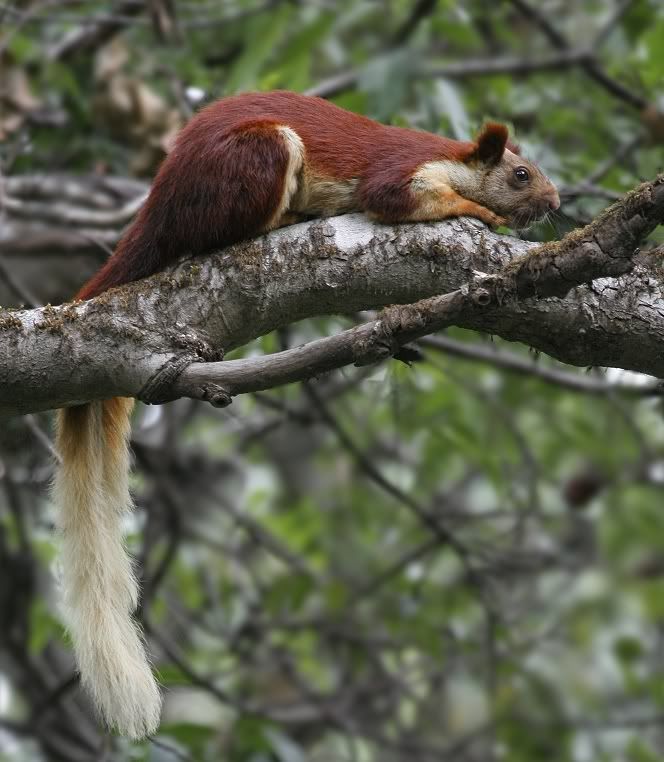 |
|
Indian giant squirrel
|
|
Canon EOS 350D,100-400 mm f4-5.6 L IS USM, Bhimashankar, near Pune, May 2008
|
|
In spite of ban on plastic in the sanctuary and efforts by Govt. and NGOs, thousands of people visiting the shrine everyday, dump the plastic bottles, colorful snack packets, and polythene bags in the pristine forest which houses leopards, shekrus, Nilgiri wood pigeons and many more critical bird and plant species. On the festival days like Mahashivaratri estimated hundered thousand pilgrims visit the place.
As I returned back walking through the forest, again shekru (Indian giant squirel) chased his counterpart, jumping from one tree branch to the other over the canopy, with the great agility and speed, covering almost fifty meters in less than 10 seconds. Indian Giant Squirrel is "Ratufa indica".
The one that is found in Bhimashankar is called as "Ratufa indica elphistoni". The Indian giant squirrel is "Vulnerable" species as per IUCN Red List.
. |
 |
|
Plastic trash on the forest trail
|
|
Canon EOS 350D, Canon 100-400 mm f4-5.6 L IS USM, Bhimashankar, May 2009
|
|
Contact me at kale_v@rediffmail.com for any queries and
suggestions.
|
| |